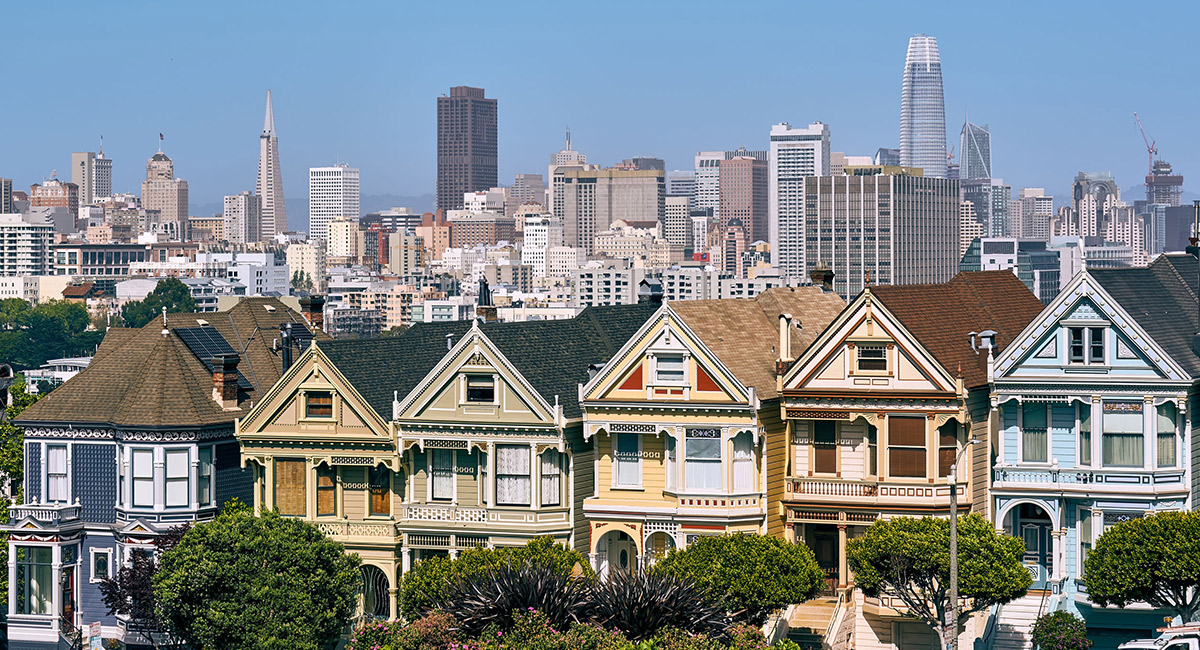Last week, San Francisco’s African American Reparations Advisory Committee submitted a proposal to the city’s Human Rights Commission that would pay every eligible African American adult living in San Francisco $5 million. The report calls for 18 other financial recommendations, including the cancellation of personal debts, annual income supplements for 250 years, and the conversion of public housing to condominiums that would be gifted to recipients. The recommendations are listed on pages 31–32 of the proposal.
I have analyzed some parts of this proposal and estimate that its cost, presented on a per-household basis, will be nearly $600,000 per non–African American San Francisco household. For the reasons I describe below, this estimate may be too low. The obvious fiscal implication is that the committee’s recommendations are infeasible. Implementing a plan of this size—or even one that was one-fifth as large—would lead to significant business and household relocations, which in turn would magnify San Francisco’s existing fiscal problems by reducing the city’s tax base and the scope and depth of its economic activity. The tax consequences of this proposal would turn San Francisco into a 21st-century version of Detroit, which has lost 60% of its population since 1950. After losing 6.3% of its population between 2019 and 2021, San Francisco remains vulnerable for additional population losses.
The major cost component of the proposal is the $5 million payment for each eligible African American who is 18 years or older. The Census Bureau estimates there are 46,466 African Americans in San Francisco. Among them are about 35,445 individuals who are 18 years or older, given the age distribution of the African American population.
Eligibility for the $5 million payments is broad (see page 30 of the proposal), so I will assume that all African Americans 18 years and older currently living in the city will be eligible for these payments. Paying $5 million to 35,455 individuals totals about $175 billion. To put this in perspective, the city’s budget for the current fiscal year is $14 billion, while this proposed sum exceeds the current state budgets of all US states except for California, New York, and Texas.
There are two key factors that I have not accounted for in these calculations due to data availability issues, that make this cost estimate conservative. One is that I am not able to account for African Americans who are not living in San Francisco now but who lived there in the past and who meet the eligibility requirements. This may expand the pool of eligible recipients substantially, because the city’s African American population was larger in previous years. In 1990, San Francisco was home to over 76,000 African Americans, compared to 46,466 today.
The other factor that suggests my estimate may be conservative is that I include only those individuals whom the census identifies as “African American or Black” as a single demographic group, and not those whose heritage includes two or more races, per the census. This is potentially important, because there are more mixed-race individuals living in San Francisco than there are African Americans. Some mixed-race individuals may be able to qualify as African American, which would expand the pool of eligible recipients, as would any mixed-race individuals who formerly lived in San Francisco.
The next largest cost component I estimate is the cost of the committee’s recommendation of supplemental payments over the next 250 years to bring the household incomes of San Francisco’s African Americans up to the median household income in the city. Estimating the total cost of these payments is more complex, as it requires using the concept of present discounted value, which is the standard conceptual framework economists use to value payments received in the future. It also requires the distribution of incomes among African American households, as households above the median income would receive no supplemental payments while the lowest income households would receive the largest annual payments. To make the calculation, I use the most recent African American household income distribution as a basis for constructing the supplements; I use a 7.4% rate to discount future incomes, which is a discount rate has been used for public projects within the city; and I assume future incomes grow at a 3% annual rate. I find that the value of income supplements, measured in today’s dollars, is about $25.5 billion.
The third largest cost component is the cost of cancelling debt liabilities of African American households. To calculate this cost, I use the median debt liabilities of African American households ($28,000) and apply that to all 18,000 African American households within San Francisco, which works out to just over $5 billion.
The fourth largest cost estimate in the proposal is that of converting public housing units that are owned by the city into privately owned condominiums for a $1 buy in. There are 6,000 public housing units in the city. To value these units, I note that the average value of a San Francisco condominium is about $942,000, and I apply a 40 percent discount to that value, to account for quality or location differences between public housing and private housing. The proposal does not specify how many of these housing units would be provided. I assume that half would be provided for this program, which yields a cost of about $1.7 billion.
There are other recommendations in the proposal that are difficult to value but that could be costly. These include new tax credits for African Americans, new legal entities to protect African Americans from being taken advantage of within the financial services industry; paying for parking fees, homeowner association fees, and mortgage refinancing fees; home maintenance and repairs; providing down payments for home ownership loans that would ultimately be forgiven; and offering free retirement planning services. None of these recommendations are specified in adequate detail to analyze their potential cost.
Adding up the costs across these four categories yields a cost of about $200 billion, which is equivalent to a $596,000 liability on a per (non-African American) household basis. The size of this tax likely means that San Francisco businesses would be expected to pay for much of the cost of the proposal. However, businesses are becoming increasingly open to relocation, particularly since the pandemic, and this problem is particularly acute in San Francisco, where, for example, Snap, the parent company of Snapchat, pulled out of San Francisco three months ago. Walter Chen, a San Francisco Bay Area office leasing consultant, described San Francisco’s tech business scene in grim terms following Snap’s October 2022 announcement:
Five years ago, if you were a tech company and didn’t have an office in San Francisco, it meant you were not a big player. . . . Now, with San Francisco having a reputation as an expensive city that is high in crime, no one wants to be there. . . . Snapchat is really telling though. Look at those offices they still have. Palo Alto. Mountain View. Their headquarters in Santa Monica outside of LA. Los Angeles itself. New York. Seattle. London. Dubai. Tokyo. These are not cheap places. Yet San Francisco was the one to go out of all of them. That’s how a lot of tech companies view San Francisco now.
Many African Americans living in San Francisco face significant economic challenges. But implementing the Reparations Committee’s recommendations is not the solution to these problems. Rather, it is a proposal that would result in massive business and household relocations, ultimately bankrupting the city.








